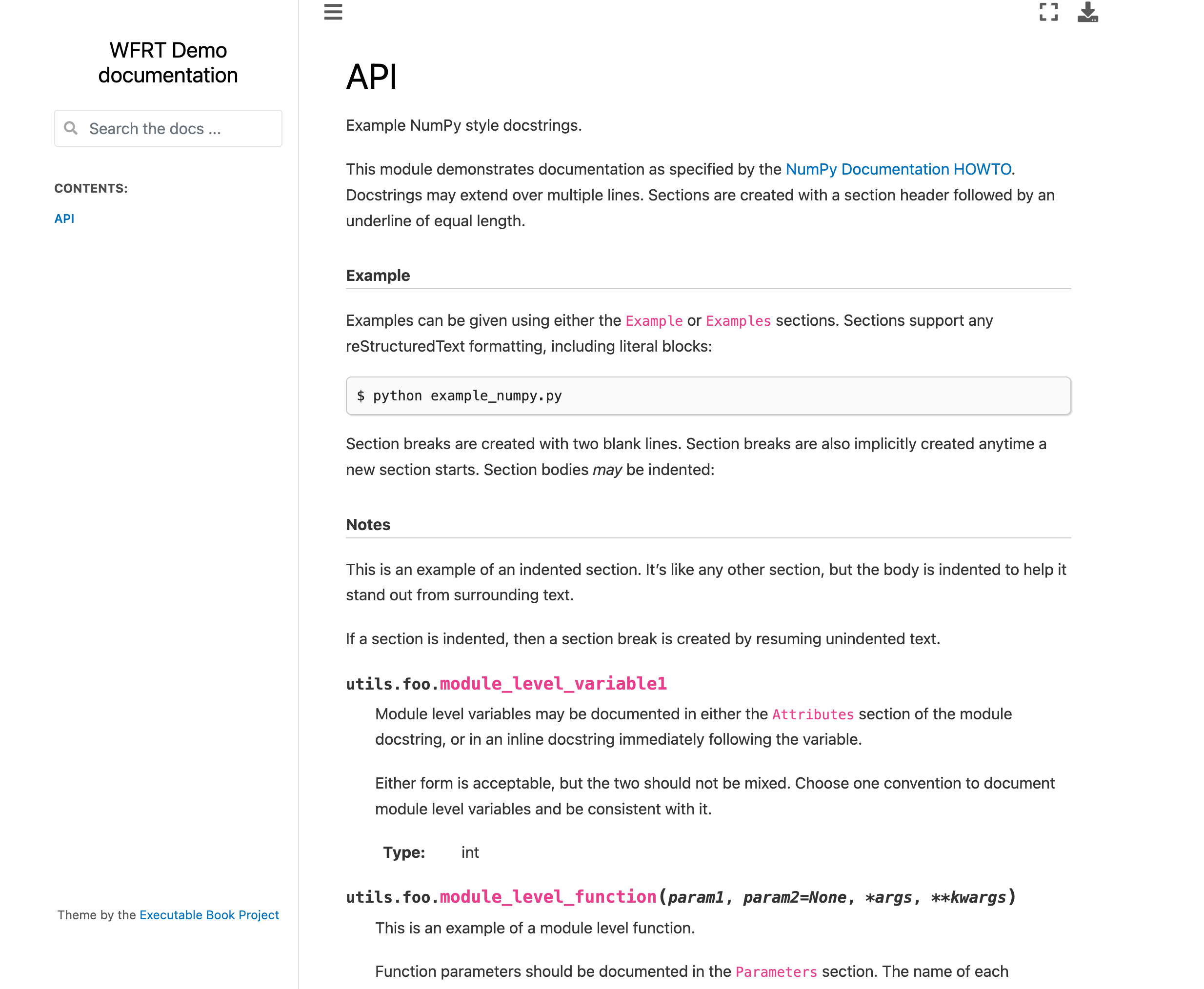Using autodocs
Contents
Using autodocs#
For this case, we are going to use automodule from autodocs
In the wfrt-demo repo there is a foo.py file that is well documented using the NumPy docstring formate
Here is what that script looks like
# -*- coding: utf-8 -*-
"""Example NumPy style docstrings.
This module demonstrates documentation as specified by the `NumPy
Documentation HOWTO`_. Docstrings may extend over multiple lines. Sections
are created with a section header followed by an underline of equal length.
Example
-------
Examples can be given using either the ``Example`` or ``Examples``
sections. Sections support any reStructuredText formatting, including
literal blocks::
$ python example_numpy.py
Section breaks are created with two blank lines. Section breaks are also
implicitly created anytime a new section starts. Section bodies *may* be
indented:
Notes
-----
This is an example of an indented section. It's like any other section,
but the body is indented to help it stand out from surrounding text.
If a section is indented, then a section break is created by
resuming unindented text.
Attributes
----------
module_level_variable1 : int
Module level variables may be documented in either the ``Attributes``
section of the module docstring, or in an inline docstring immediately
following the variable.
Either form is acceptable, but the two should not be mixed. Choose
one convention to document module level variables and be consistent
with it.
.. _NumPy Documentation HOWTO:
https://github.com/numpy/numpy/blob/master/doc/HOWTO_DOCUMENT.rst.txt
"""
def module_level_function(param1, param2=None, *args, **kwargs):
"""This is an example of a module level function.
Function parameters should be documented in the ``Parameters`` section.
The name of each parameter is required. The type and description of each
parameter is optional, but should be included if not obvious.
If \*args or \*\*kwargs are accepted,
they should be listed as ``*args`` and ``**kwargs``.
The format for a parameter is::
name : type
description
The description may span multiple lines. Following lines
should be indented to match the first line of the description.
The ": type" is optional.
Multiple paragraphs are supported in parameter
descriptions.
Parameters
----------
param1 : int
The first parameter.
param2 : :obj:`str`, optional
The second parameter.
*args
Variable length argument list.
**kwargs
Arbitrary keyword arguments.
Returns
-------
bool
True if successful, False otherwise.
The return type is not optional. The ``Returns`` section may span
multiple lines and paragraphs. Following lines should be indented to
match the first line of the description.
The ``Returns`` section supports any reStructuredText formatting,
including literal blocks::
{
'param1': param1,
'param2': param2
}
Raises
------
AttributeError
The ``Raises`` section is a list of all exceptions
that are relevant to the interface.
ValueError
If `param2` is equal to `param1`.
"""
if param1 == param2:
raise ValueError('param1 may not be equal to param2')
return True
To document this script, all we need to do is go into our api.rst file and add the following
API
=====
.. automodule:: utils.foo
:members:
Lets rebuild our webiste
make clean
make html
And this new work to GitHub and see documented code.
git add .
git commit -m "added api to docs"
git push

